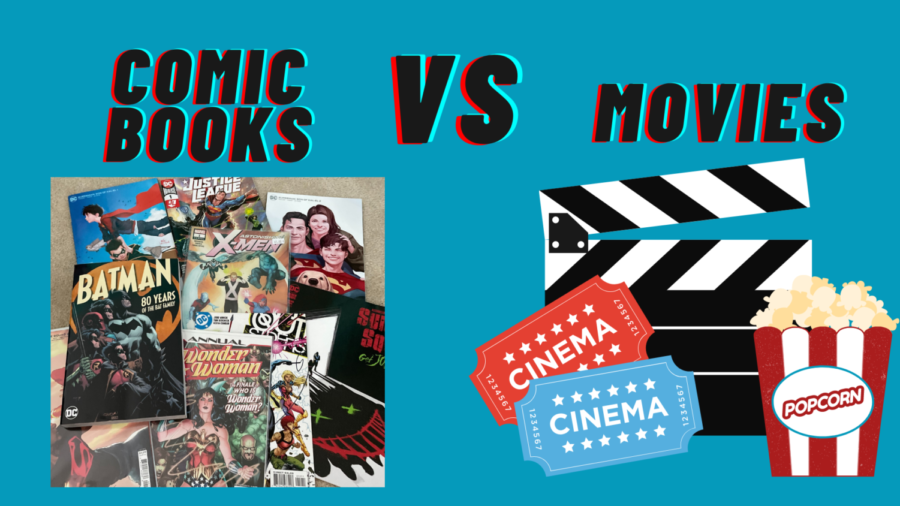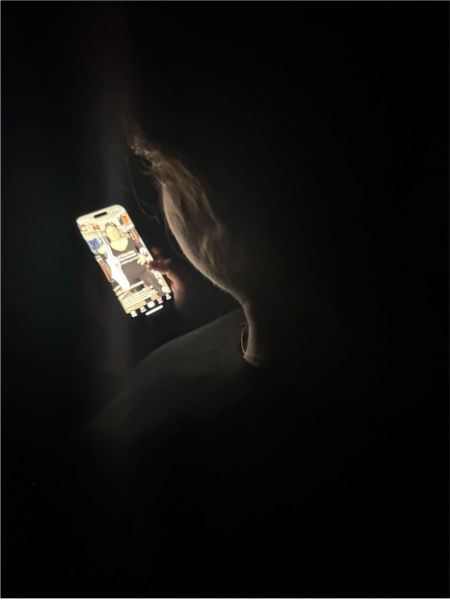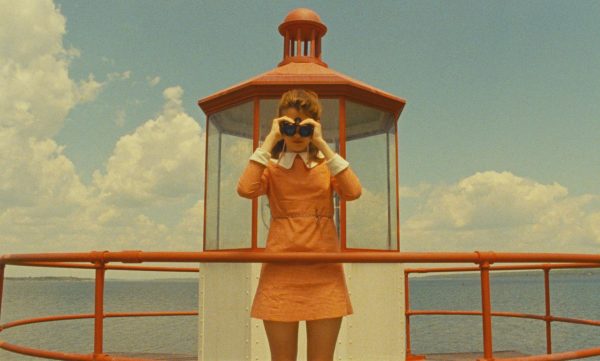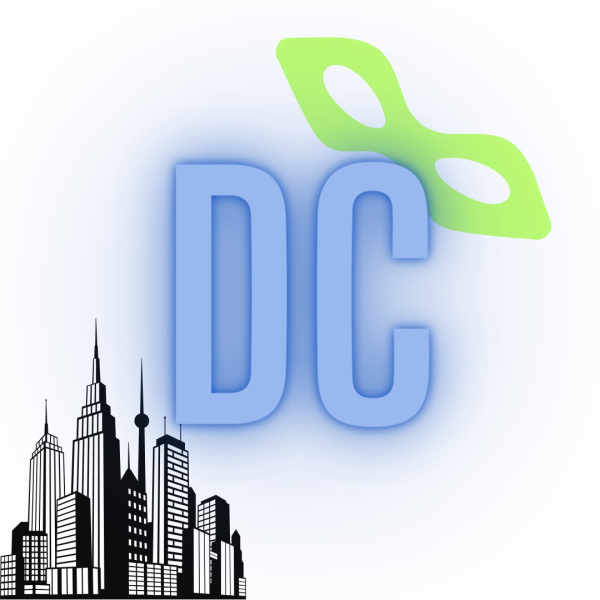Comic books vs movies
What happens when the movies do not stay true to the source material
Comic Books
Most of the time, popular superhero and fiction movies are inspired by literature, specifically the comic books that created those characters. However, the movies and TV shows do not always stay true to the source material. This has ranged from the Wonder Woman movie being set in World War I instead of World War II to sucking the Batman Universe dry of all its diversity. The comics and movies are great in both ways, but they are also different in many ways.
Beginning with the DC Comics universe, Batman needs to be addressed, being one of the most popular characters. There have been multiple live-action Batman movies and even more animated movies and TV shows. Although Batman (also known as Bruce Wayne) himself is not a diverse character seeing as he is a rich white man, other characters in the Batman universe come from different backgrounds. The adopted son of Batman, the first and most popular Robin, and later Nightwing, Dick Grayson, is Romanian, and they hardly ever mention or respect his culture. In “Batman Forever” starring Val Kilmer as Batman and “Batman & Robin ” starring George Clooney, they portray Dick Grayson as a white college student, not a Romanian pre-teen. When Dick Grayson came into Bruce Wayne’s custody, he was young. Various comics portray Dick Grayson from ages ranging from seven years old up to 15. In the minority of comic books is Dick Grayson late high school or early college-aged. They may have changed his age in the movies so they did not have to deal with child actor labor laws, like children only being allowed on set during filming for a specific amount of time.
Jason Todd became the second Robin after Dick Grayson went on to become Nightwing. He is almost never included in mainstream media. This could be because he goes on to die and comes back to life, so it may be a little too complex to accurately depict his story in a short time frame. He is more of an anti-hero after his resurrection, as he felt the only way to get justice was to kill criminals. He took over the drug rings and eliminated crime rates in Gotham even more than Batman did by controlling crime. Despite the controversial beliefs he gets later in life towards justice, he is still a very important character that should be included more. However, he was included as the main character in a recent Suicide Squad comic series, this not being the first time Red Hood has teamed up with the Suicide Squad. The Suicide Squad led by character Amanda Waller includes popular characters like Harley Quinn. Both live-action “Suicide Squad” movies do not include Red Hood. He is such an important character to include because of the diversity represented through his socioeconomic background, which explains why he has the beliefs he does. He watched leaders of the drug ring not care when their employees’ sold drugs to kids and some of Jason’s friends growing up died of overdoses as his mom did. It’s important to represent how drug users’ choices affect their loved ones.
Not even six months after Jason Todd died, Batman found himself his third Robin, Tim Drake. If Jason Todd is almost never included in anything mainstream, then Tim Drake may as well not even exist. I will admit, he is definitely not the most diverse character in the Batman universe, but, even so, Tim Drake is more diverse than Bruce Wayne. Bruce Wayne was a rich white kid and Tim is similar to him, but Tim is smarter and part of the LGBTQ+ community. Tim Drake even figured out who Batman and Robin were when he was nine years old which further highlights his genius and detective skills. Along with being a fantastic, smart, future co-CEO of Wayne Enterprises, he later became Red Robin after he stopped being Robin. Although, a recent development was that in comic “Batman: Urban Legends” number six he was revealed to be bisexual. Through various fanfiction and Reddit forums, there have been debates over the sexualities of Batman’s sidekicks over the years. This is such a crucial development, but of course it is the one Robin that is never in mainstream media that is part of the LGBTQ+ community.
Damian Wayne, the only son of Bruce Wayne and Thalia Al Ghul (and who I named my cat after) is the most recent Robin (he succeeded Tim as Robin). Thalia Al Ghul was the daughter of Ra’s Al Ghul, the leader of the League of Assassins. Damian is obviously white on his father’s side through Bruce Wayne, but on his mother’s side, he is Chinese and Arab (Ra’s Al Ghul is Arab, the League of Assassins is located in Nanda Parbat). Other than Dick Grayson, Damian Wayne is the second most-shown in media Robin. He is a young boy and portrayed as white when he is not. It is so crucial to not whitewash him, especially because he is the son of a rich white socialite who will eventually not only inherit Wayne Enterprises (a massive multi-billion-dollar business and tech company in the DC universe), but also will take up the helm of Batman. Speaking of taking up Batman’s cape, for a short time in the comics when Bruce disappeared, Dick Grayson became Batman and Damian was his Robin. Also, Damian was born out of wedlock and Bruce did not even know he had a son until Damian was ten. That is why Damian is such a big deal because he is the secret love child everyone expected playboy Bruce Wayne to have, but not white like people expected Bruce’s son to be.
Cassandra Cain, one of the many Batgirls (the original Batgirl was Barbara Gordon) and later Black Bat, was the daughter of David Cain and Lady Shiva and both were assassins. After being horrified after her first kill, she seeks asylum with the Bat family. Cassandra Cain is Vietnamese and mute, and she is also illiterate. She was mute and illiterate because her father thought those to be unimportant skills, he wanted her to focus on her fighting skills so she could become a weapon. Part of Cassandra’s super awesome assassin skills is that she can read sign language. As a result of her not being able to read or write, she has severe dyslexia. She often communicates with people through sign language.
Iconic plant activist supervillain, Poison Ivy. Her character, also known as Pamela Isley, has an incredibly sad villain backstory in many comic book plots. In one she was the victim of an abusive father. Isley was born with a sunlight sensitivity that she had medication for, but her father always locked her inside and abused her as well as her mother. Pamela’s mother would ignore the physical abuse by planting in her garden, but one day her husband killed her and buried her in her flower garden. Poison Ivy’s father was arrested and sentenced to life in prison for domestic violence and murder charges. Pamela was sent to a relative and experimented with plant pheromones that gave her her powers. After Pamela Isley became Poison Ivy, she went to visit her father in prison and poisoned him, effectively killing him. In other comic book storylines, she gets sexually manipulated by either Dr. Jason Woodrue or Isley’s botany professor, Marc LeGrande. The comic book origin is similar to the “Batman & Robin” Poison Ivy origin. In the comics, Dr. Woodrue injects Isley with plant toxins as an experiment, while in the movie Dr. Woodrue tries to kill Isley instead, transforming her into Poison Ivy. In the Marc LeGrande version, Isley and LeGrande committed theft together and he poisoned her to kill her. Sexual abuse is not represented a lot in media, so it is crucial to include some form of Poison Ivy’s back story for more representation. Poison Ivy also has been bisexual in the comics for quite a while and many storylines have included her relationship with Harley Quinn. The recent “Harley Quinn” tv show has also included the relationship. Like Red Hood, in the comics, Poison Ivy has teamed up with the Suicide Squad and was a part of it an 80s comic series. Harley Quinn actor Margot Robbie has been an advocate for including Poison Ivy and Quinn and Ivy’s relationship in the current DC universe.
“Trust me, I chew their ear off about it all the time,” Robbie said in an interview with Den of Geek. “They must be sick of hearing it, but I’m like, ‘Poison Ivy, Poison Ivy. Come on, let’s do it.’ I’m very keen to see a Harley-Poison Ivy relationship on screen. It’d be so fun, so I’ll keep pestering them.”
Along with Tim Drake recently coming out as bisexual, Clark Kent (Superman/ Kal-El) and Lois Lane’s son, Jon Kent, also came out as bisexual. This is especially fantastic because Jon has taken over his father’s role as Superman, so Superman is bisexual! Jon used to be Superboy. This occurred in “Superman: Son of Kal-El” #5, which is a recent comic series that I highly recommend you read. While this is important, Jon Kent’s coming out is similar to Tim Drake’s. Superboy was first Conner Kent, Superman’s clone who was exactly like Clark but a little younger. Most people know Superboy as Conner (Kon-El is his Krypton name), and he was made with Lex Luthor’s DNA as well as Superman’s. So, while it is great that the current Superman in comics is bisexual, it is not the most well-known Superman or Superboy; but something can be said for the fact that the biological son of Superman is bisexual rather than Superman’s clone who he has a weird son/brother relationship with. Another situation like this is back in 2016. Aqualad also came out as queer; but again, that wasn’t Aquaman, but his less well-known sidekick. At the end of the day, I do think making Superman bisexual had the best intentions.
“I’ve always said everyone needs heroes and everyone deserves to see themselves in their heroes. Today, Superman, the strongest superhero on the planet, comes out as bisexual,” Tom Taylor, DC comics writer for “Superman: Son of Kal-El” said on Twitter. “I knew replacing Clark with another straight white savior could be a real opportunity missed.”
The 2017 film “Justice League” was by far the worst rendition of the Justice League that I have ever seen. Not only did the plot not make any sense and seemed like a bad copy of “Avengers: Infinity War” (DO better DC!!! From your comics I know how fantastic you are! Warner Brothers you killed it with Harry Potter so why are you literally killing the Justice League!), but they made the Justice League lack all the admittedly little diversity they had. The only diverse character was Cyborg who is canonically Black in the comics. In the comics some diverse justice league characters include Apache Chief (Native American, who notably wasn’t an Apache Chief. One word to describe him and his name is “stereotypical”), El Dorado (Mexican), Martian Manhunter (who is Black in his human disguise), Black Lightning (Black), Samurai (Japanese), Black Vulcan (Black); but although these are really great diverse characters, how they are represented and even named can be very racist. Although characters, like in comic book inspired “Super Friends” from the 70s and 80s, were made to try to be more inclusive, they only highlighted stereotypes in races through name choices and highlighted white justice league members racist behaviors.
“Wonder Woman” starring Gal Gadot was an admittedly okay movie, but as a comic book lover there were certain aspects of the movie that I cannot let go. A massive difference was that Steve Trevor does not actually know Diana is Wonder Woman. Diana Prince is Wonder Woman’s secret identity which she tries to keep secret. After all the back and forth, and misconceptions, especially since Diana Prince worked as Steve Trevor’s secretary, I can eventually be okay with people who are not supposed to know she is Wonder Woman knowing that she is. What I cannot forgive is that they set the movie during WWI; in the comics, Wonder Woman’s original setting was WWII. This is so important especially because Wonder Woman represented hope during WWII, she was like Captain America in the DC universe (side note: Captain America and Wonder Woman debuted within months of each other in 1941, so DC didn’t copy Marvel and vice versa). They may have chosen to switch the time period to WWI because WWII is a far more sensitive topic and more recent occurrence, although not that recent. Also, WWII veterans are still living (some with PTSD) and may get triggered when they watch a movie set where they were fighting overseas; but they could get triggered by any war movie, so the reason behind the setting change is still a mystery. To me, Wonder Woman was a female icon in a mostly male dominant era when women were just starting to become part of the workforce. The most iconic and comic-book-accurate Wonder Woman media I have ever seen was the “Wonder Woman” TV show starring Lynda Carter in the 70s, it had the right amount of Steve Trevor drama and Wonder Woman fighting Nazis.
The CW television network has made multiple superhero inspired shows that are great including diversity like their show “Batwoman,” who is canonically a lesbian and they have done a good job at highlighting that fact instead of hiding it. Kate Kane, who is Batwoman, is Bruce Wayne’s cousin. Season one had Ruby Rose playing Batwoman, but after Ruby Rose left the show, Javicia Leslie (who is Black) took over the role of Batwoman. Other shows like “The Flash” have so much Black representation. Barry Allen’s love interest, Iris West, was casted by Candice Patton (Black). The West family in the show was Black, and the West family is a massive part of “The Flash”’s storyline. Wally West (my favorite I love him so much) was Iris’s brother in the show rather than her nephew. Barry Allen and Iris West’s future children were casted by Jessica Parker Kennedy and Jordan Fisher. Although the CW shows stray away from the original comic book storylines and take liberties with the plot, they make up for it by having a diverse cast and representation.
“Young Justice” is a TV show that started in 2010 and has been ongoing since. There was a hiatus between all the seasons (except the recent ones), but with enough petitioning the show was brought back. The show follows the sidekicks of the main Justice League like Robin, Kid Flash, Aqualad, Ms. Martian, Artemis, and Superboy. Throughout the seasons, it follows those characters from when they were teens to adults. Aqualad took over the Aquaman title in season four (We have a black Aquaman!), and in season three it was revealed that he was dating a man. Kaldur’ahm has had female love interests before, and it is also unknown what his sexuality exactly is. He is from a mixed family, his father is not his biologically. It also discusses familial relationships, through Artemis’ family and season three character Harper Row. Harper’s father was an alcoholic and abusive to Harper and her brother. Harper and her brother feared being separated if they told someone, but her counselor, M’Gann (Ms. Martian, has been a main character of the show since season one) made her feel safe enough to admit it. The Justice League are the protectors of the world, so the young justice team and the “Outsiders” (both Justice League youth superhero teams) go all over the world helping countries and people when they are in trouble. They discuss disputes between countries and include UN meetings. It highlights the harms dictators are doing and the effects of wars on citizens, specifically in Arab countries. New season three character Violet, their superhero name is Halo and was originally Gabrielle, has a complicated backstory, but came out as nonbinary and was accepted by the Young Justice team with open arms. There is also more LGBTQ+ diversity shown in the show. They showcase greater themes, like the importance of communication to nurture healthy relationships and how death/ grief affects people. It also deals with racism through symbolism like White Martians and straight up; although they are doing a good job, they are also failing in some aspects. Like they introduced a new villain in season three named Holocaust, who has fire powers, definitely in poor taste; but besides the mistakes, they also made Black Lightning the leader of the Justice League and all the youth teams at the end of season three. They also revamped past Justice League characters like El Dorado and Apache Chief. El Dorado, Eduardo Dorado an Argentine teen, and youth counselor for troubled (read metahuman) teens. Eduardo was also revealed to be dating Kid Flash (Bart Allen, the successor of Wally West’s one in the series). They also include Apache Chief, a teenage Mescalero Apache boy named Tye Longshadow. It is unclear what his hero name will be, or if he will even become a member of one of the Justice League youth teams. At least, since the 1970s, he lost the clearly racist catchphrase (“ineck chock”).
Transitioning into the Marvel Universe, Disney Plus’s show “WandaVision” does a great job at paying homage to the traditional comic book storyline while making distinctions between the comic book storylines and what the show is. Wanda was originally in the X-Men universe and was the daughter of Magneto, but the Marvel Cinematic Universe decided to have her character in the Avengers universe rather than the X-Men movie universe. The Avengers universe killed off her twin brother, Pietro. The X-Men universe did not include Wanda at all, and Pietro whose name was changed to Peter. In WandaVision, they reconnected the two twins from different universes (played by Elizabeth Olsen and Evan Peters), even though they were both from other worlds so there are deeper connections. Wanda and her twin brother were known as the Scarlet Witch and Quicksilver. In episode 6 of “WandaVision,” it is a Halloween episode that features Wanda’s, Vision’s, and Pietro/Peter/Quicksilver’s original comic book costumes which was cool to see. It was nice to see the bridge between the two Marvel movie universes and to have the Maximoff twins reunited, even though they aren’t their own universes twin.
“Avengers: Infinity War” and “Avengers: Endgame” are both incredibly popular Marvel movies that did very well in the box office. While these are fantastic movies, there is still quite a difference between what happened in them and the comics. Starting with “Avengers: Infinity War”, which should have been called “Infinity Gauntlet.” In the comics, “Infinity War” was the sequel to “Infinity Gauntlet.” In “Infinity Gauntlet,” Thanos collected the six infinity stones all by himself which is way less dramatic than how it went down in “Avengers: Infinity War.” Also, instead of Thor killing Thanos, Nebula did. A Nebula who was very much not a cyborg and was Thanos’ granddaughter. Nebula managed to sneak over to Thanos after he became at peace with the universe, stole the gauntlet, and reversed the damage her grandfather did to the universe.
Another difference from the comics and movies was that in the movies, time travel was a massive part of the movie “Avengers: End Game,” but the comics don’t even include time travel in the storyline. An important thing to consider is that the deaths in “Avengers: Infinity War” didn’t seem permanent. Believe me, I was bawling my eyes out when walking out of the movie theater, but it was also like, “they can’t stay dead, can they?” and they didn’t stay dead. The characters who died in the snap were also brought back in the comics, but in the comics characters didn’t die trying to bring the people back (Iron Man and Black Widow cough cough).
At the end of the day, the differences between comics and mainstream media do not really matter but are still fun to point out. Both the TV forms and comics are equally great and bad for different reasons. The comics are a lot more bold and less careful, which is great for including LGBTQ+ representation, but they were also pretty blatantly racist. It is important to note that they are racist because they are older, but that does not defend them or make it less wrong. The movies stray away from the comics to make them work in a smaller viewing time and are less controversial because of it (most of the time). Along with being racist, objectifying/ sexualizing women in the comics was incredibly popular. Having accurate representation of different cultures, races, sexualitites, genders, lifestyles, family dynamics, showing abuse and addiction, and so much more is so important to show in mainstream media. Also, children are the targeted audience in most super hero media, so what is seen in media directly influences kids perspectives on how they should treat others. Everyone should feel represented somehow and people become more educated through accurate representation. Sometimes comics came after the movies, like how Star Wars now has comics based off of the movies and two TV series that help add more to them. My brother swears that the Star Wars series on Disney Plus are the best, followed by the comics, and in last place are the original movies. In the end, it does not matter which one is better, it is what form of media is right for you.
Note: To my fellow comic book lovers/readers, I know there is a lot I did not include, but I could not include everything. Sorry 🙁
What did you think about this story? Do you have any suggestions for improvements or other articles that you would like to see? Please use the contact form to communicate with us! (Keep all information school-appropriate)
https://docs.google.com/forms/d/e/1FAIpQLSeRYRWwLLzvs2rqwHSGdr-DQRvxhUSx9UcaXypXxnvVuCqwyA/viewform













